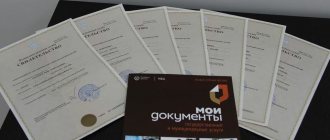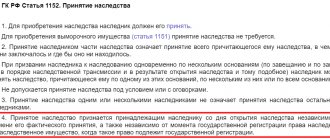What will you need?
To establish the fact of a family relationship with the deceased, it is often enough to have on hand:
- All-Russian passport or its equivalent - international passport, temporary certificate or other document confirming identity;
- for minors - children's school;
- your birth or marriage certificate;
- certificate of death of a relative;
- extract from the house register.
Important! The relative who handled the funeral usually receives a death certificate. It gives him an advantage in confirming kinship.
As you know, birth and death, adoption, marriage or divorce are recorded in the registry office, and those who apply receive certificates. Therefore, if some papers are missing, for example, they were lost after moving or burned in a fire, you have the opportunity to contact the government agency and correct the duplicate.
The process of obtaining new papers takes some time, and if registration was carried out in another city, you will have to make a request there. Please note that you will have to pay 200 rubles for archival information, 350 for receiving duplicate papers. They cannot refuse you, but if a refusal is received, you will have to demand the papers in court.
How to prove family ties with your grandmother?
To do this, the granddaughter (grandson) needs to restore the family chain. To do this you need to collect the following documents:
- birth certificate of the mother or father (depending on whose mother the granddaughter’s grandmother is);
- mother's marriage certificate - if maternal grandmother. This document will not be needed if the mother did not change her last name after marriage;
- birth certificate of the granddaughter (grandson), which contains information about the parents;
- granddaughter's marriage certificate (if necessary).
If the parents are no longer alive, then the granddaughter/grandchild needs to contact the registry office and obtain a death certificate.
Proof
And let’s look in more detail at how family ties with specific individuals are proven.
How to prove relationship...
...with grandma/grandfather
For a positive result, it is enough to have on hand (or obtain from the state archive, registry office) papers that can be used to trace direct kinship: the birth certificate of your parents (one of them) indicating your grandmother/grandfather as parents and yours.
...with mother/father
It may seem strange, but often children have to confirm that they were born to a specific man or woman. How to prove relationship with mother or father? In most cases, it is enough to show your birth certificate, which indicates your parents, or a parent’s passport with your name in the “Children” column.
What to do if you don’t have such documents on hand? At trial, witness testimony, photographic and video materials, and the results of a genetic examination will help, but only a good lawyer can understand what will work in your case, so in all difficult cases and in the absence of obvious evidence, you should definitely consult.
...with brother/sister
The priority papers for confirming the relationship between such close relatives as brother and sister are their children's certificates (about birth, adoption, adoption), in which there is a match for at least one of the parents.
Additional advantages will be provided by other arguments in favor of family ties - DNA test, witness testimony, personal correspondence, etc.
...with aunt/uncle
How to prove relationship with an aunt or uncle? Here you will have to go a little longer. First, confirm that your mother/father was a brother/sister to your aunt/uncle, and then - that your parents are really yours.
Grounds for establishing family ties
Often the need to prove relationship between relatives arises in the following cases:
- during inheritance - if the interested person wants to receive an inheritance from a deceased relative;
- when drawing up a deed of gift for movable or immovable property - if the recipient is a close relative of the donor, then he will not have to pay a tax of 13% of the value of the donated property;
- to collect alimony;
- to confirm nationality during immigration, etc.
Judicial order
It happens that documents are lost irretrievably, and the registry office, no matter how hard it wants, is unable to correct the duplicate. All that remains is to go to court. There is no need to delay: the law gives only six months to accept an inheritance. If you miss time, you will have to go to court again to restore the deadline.
It is important to understand that the claim will be accepted only if it is justified, as well as demonstrating that all other ways to prove kinship with the deceased have been tried, but have not brought results. That is, you cannot submit an application just because you “need to know for sure whether he is my father or not.” The judge will definitely not accept such argumentation.
Step 1
You can start establishing family ties by drawing up a schematic family tree, which will clearly show your connection with the testator.
It is advisable if the diagram contains first and last names, as well as years of life - this will allow you to clearly present your position to a judge, notary or archive employee.
Step 2
The second thing that needs to be done is to correctly draw up a statement of claim to establish the fact of a family relationship.
Any application to establish the fact of relationship must contain:
- court details;
- personal information about the plaintiff, defendant and third parties involved in the inheritance process;
- a description of the circumstances of the case and a laconic listing of all known facts from the life of the testator (when he was born, married, died);
- justification for the need for treatment;
- formulation of claims.
Establishing a relationship through the court to obtain an inheritance will be most successful if it is possible to attach a large number of proof papers to the claim. In addition to the standard ones, which we mentioned above, and the family tree diagram, the following will play a decisive role:
- witness testimony - do not underestimate its importance, because the more you attract friends and acquaintances who can confirm the relationship and convincingly answer the judge’s questions, the higher the chances of winning;
- personal correspondence, including congratulatory telegrams and cards;
- certificates received at the place of residence;
- questionnaires and biographies from the place of employment/educational institution with a list of relatives;
- various receipts;
- DNA test results.
The importance of involving a lawyer in the trial lies not only in the fact that he will most advantageously represent the interests of the client, but also in the fact that some archival papers are issued only at the request of a lawyer. The plaintiff will not be able to obtain them on his own, but they can play a decisive role in the consideration of the case.
Important! A claim without a paid state fee will not be accepted, so you must pay 300 rubles in advance. This amount may increase if the claim, along with a request to recognize kinship, contains claims of a property nature. You can find out the amount of the state duty in your case at any time from our lawyers by calling the toll-free number +7495-532-22-13.
A court decision will either help restore lost papers (on its basis a new entry is made in the registry office books), or will become conclusive evidence for a notary when registering an inheritance.
Will an examination help?
At the initiative of interested persons or a lawyer representing their interests, a genetic examination is carried out. The plaintiff has the right to petition to establish a relationship by DNA, but the judge is not able to oblige the defendant to take the test. It turns out that if a potential relative does not want to recognize a blood relationship, then he has the right to refuse, and such a decision does not become the basis for satisfying a claim in your favor.
The study is carried out by specialized medical institutions with a license, and only for a fee. To take the test you need:
- sign an agreement with the clinic and make payment;
- provide genetic material - blood, saliva, hair, skin scrapings, etc.
Important! Positive medical examination results become official evidence of relationship, but are not self-sufficient and cannot be considered without other arguments.
Undoubtedly, DNA testing has advantages, and its results can tip the scales in your favor when other arguments do not seem too convincing to the judge. However, there are also certain disadvantages:
- Expertise alone is not enough to convince a judge;
- the procedure is very expensive;
- Often you have to order a test in another city, and then wait a long time for the results.
Our attorneys recommend weighing the pros and cons of your specific situation before deciding whether to apply for a genetic test.
Judicial procedure for recognizing kinship
In some cases, the fact is proven in court. People apply here in the absence of basic evidence, which is the certificate. For a positive decision, it is necessary to provide the court with a complete evidence base. It includes:
- written and oral testimony of witnesses;
- Photo and video;
- letters and correspondence;
- certificates of marital status;
- records from house books;
- if available, family tree;
- different data from the employer or from the place of training.
Read also: Taxes when selling an apartment received by inheritance
The more evidence is presented, the higher the chance of getting a positive result, which will allow you to claim an inheritance.
Statute of limitations
Establishing a blood connection does not have a statute of limitations, but a number of procedures are limited in time. For example, an inheritance is accepted within six months and this period is subject to restoration only if there are good reasons, and alimony can be collected until the child reaches adulthood.
Parties to the lawsuit
The lawsuit has two sides. One of them is the applicant, that is, the person who needs to obtain the fact of the presence of a relative. The other party is an interested party, which can even be a notary.
How to make an application?
The application must be drawn up in accordance with all the rules.
It contains all the information that must be relevant and reliable. Important! Along with the application, the evidence base, as well as a receipt for payment of the state duty, is submitted to the court. All documentation must be certified and fully comply with all requirements.
The details of the court to which the application is being made, as well as personal data, must be entered. In addition, the request itself is written, indicating data on the persons who need to be contacted.
The application contains an additional list of attached forms and evidence.
Documentation
Several options are used as data that is attached to the application and serves as evidence. These include not only certificates, extracts and certificates, but also various court orders, as well as documents issued at work or social security.
The attached documentation includes DNA data, as well as photos and video materials. Additionally, an expert report on the exhumation and written testimony of witnesses, which are fully documented and certified, can be attached.
Legal advice and assistance
If your case is atypical and complex, and even after reading this article you do not know how to prove the degree of relationship, call and our lawyers will answer your questions and tell you how to act correctly.
During a free conversation, you will receive clarification on any nuances, including:
- how to prove relationship when donating an apartment;
- where to make a request if the required registry office is no longer in sight;
- what to do if your great-great-great-grandfather lived before the revolution;
- Will the funeral certificate be issued to distant relatives?
Get competent advice right now by calling the hotline +7495-773-07-81.
How to prove kinship with your grandfather who died?
To do this, the grandson must apply to the court. Along with the statement of claim, he must attach the following documents:
- marriage certificate concluded between grandparents;
- father's birth certificate, which contains the necessary information about grandparents;
- the birth certificate of the applicant himself, which indicates information about his father.
It will also be useful to have testimony from witnesses who can confirm that the applicant’s father was indeed his grandfather’s own son.






